Carter's Spring
Tour Stop
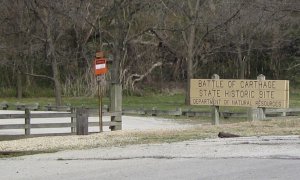
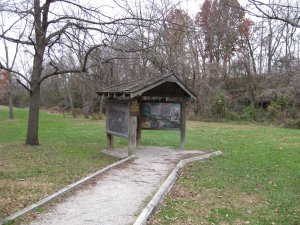
Directions: The Carter's Spring tour stop [ Waypoint = N37 10.384 W94 17.850 ] is located at the Battle of Carthage State Historic Site in Carthage, Missouri 64836.
- Get back in your car and travel east on Chestnut Street for a couple of blocks.
- Take the first left (north) after you cross the railroad tracks.
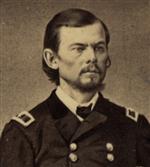
Description: The final stop on the tour brings you to the location where Federal Colonel Franz Sigel's force had started their day and begin a long night of marching toward Sarcoxie to escape the Missouri State Guard. The Missouri State Guard camped here on the night of July 5, 1861. You have arrived at the Battle of Carthage State Historic Site which is located at Carter's Spring. There is an informational kiosk here that interprets this battle. This was the location where Sigel camped the night before the battle. They had broken camp at 0500h on the morning of July the 5th. By 2200h they were back where they had started and exhausted. Sigel's troops and his wagon train would advance all night to get to Sarcoxie along the Sarcoxie Road. Although the Sarcoxie Road no longer exists, the railroad tracks approximate the direction of the road. [68]
To protect his retreat to Sarcoxie, Sigel personally deployed Company E, First Battalion, Third Missouri across the Sarcoxie Road in the dark. There was a brief engagement with units from the Missouri State Guard after which Company E quickly headed for Sarcoxie. Sigel would link up with Brigadier General Nathaniel Lyon in Springfield, Missouri in mid July. The Missouri State Guard would encamp at Carter's Spring on the night of July 5.
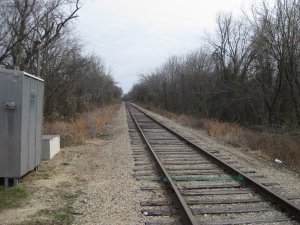
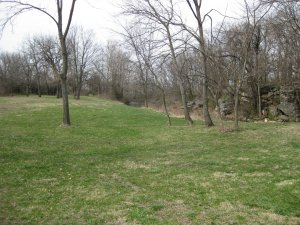
Company E's Sergeant Otto C. Lademann later described their last encounter with the Southerners at the start of the road to Sarcoxie: [69]
[By 7:00 p.m. the Southerners] occupied Carthage, and from the public square opened fire with a battery of artillery on our troops, which was returned in a languid manner by two of our guns. Here Colonel Sigel personally ordered my Company (“E,” Captain John E. [Strodtkamp]), to remain and hold the enemy in check until further orders.
Captain [Strodtkamp] formed the company in column of platoons, across the Sarcoxie road. The sun went down; all troops to the right and left of us marched off, our company being left solitary and alone on the prairie, about 300 yards from the timber fringing Spring River, the place where we had camped the night before. It was nearly dark, when we noticed the edge of that timber filling up with men, and a mounted officer riding toward us was met by our 1st. Lieut. Poten. They each asked “What regiment do you belong to?” and the enemy answering 2nd Missouri Infantry. Poten fired his pistol at him, but missed. As soon as the officer had regained his line, we were greeted by a volley that knocked our Captain and three men down and owing to our foolish platoon formation only our 1st platoon could return the fire, and when about three or four hundred of the enemy burst out of the woods rapidly advancing on us, cheering and firing, we picked up our own wounded Captain and “skedaddled.”
After running about a mile, and occasionally returning the fire of the enemy, I met, a solitary horseman, our Lieut. Colonel Hassendenbel, who was greatly astonished when I told him we were Co. “E” of his battalion, remaining behind by special order of Colonel Sigel, and apparently forgotten by him. Here we halted long enough to rally the Company, and a mile further on we joined the rest of Colonel Sigel's command. It was about 9 p.m., when the brigade was formed in line of battle, on the edge of the timber, where the Sarcoxie road leaves the prairie.
Back: Sigel's River Road Defensive Line
Next: Epilogue
